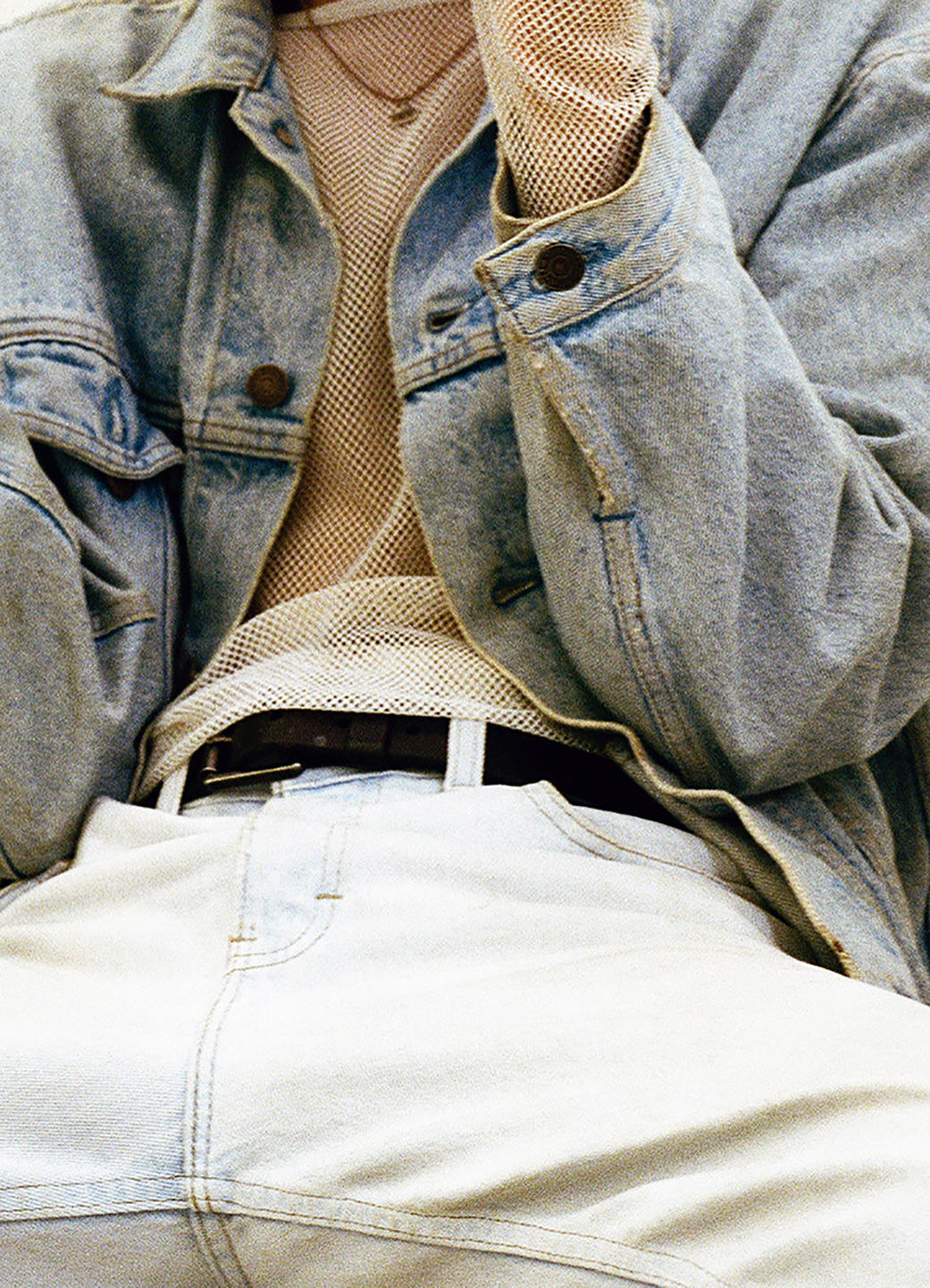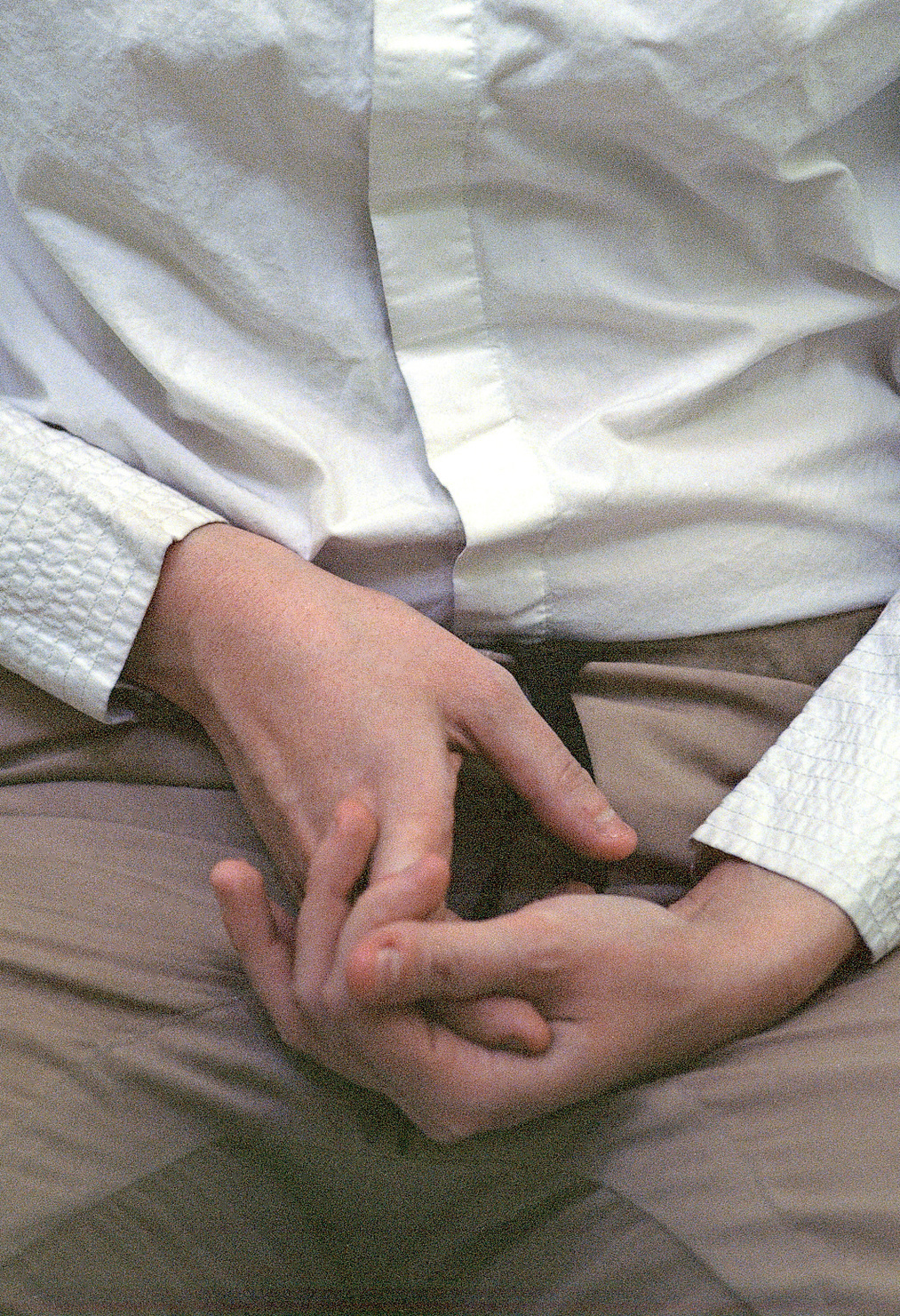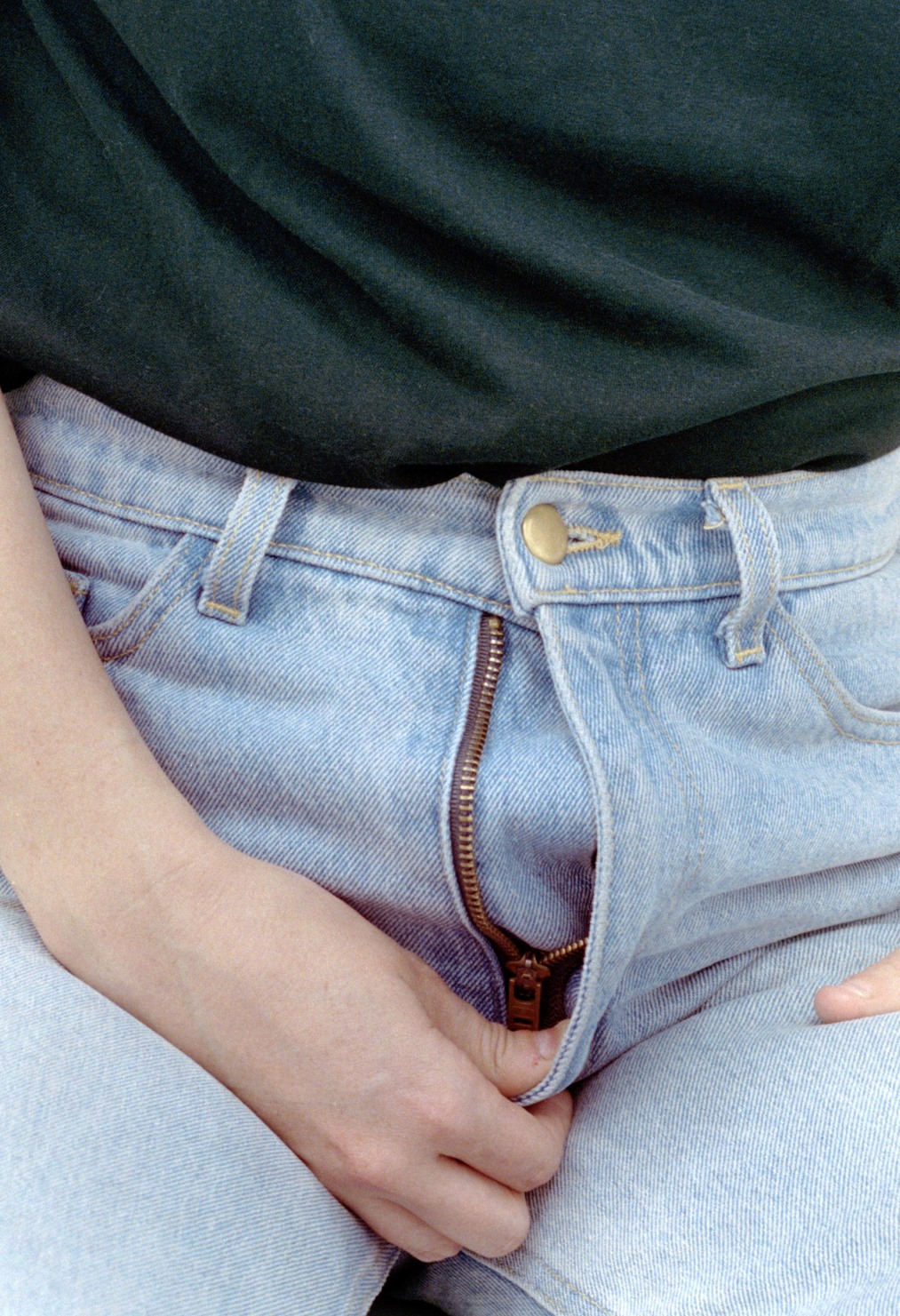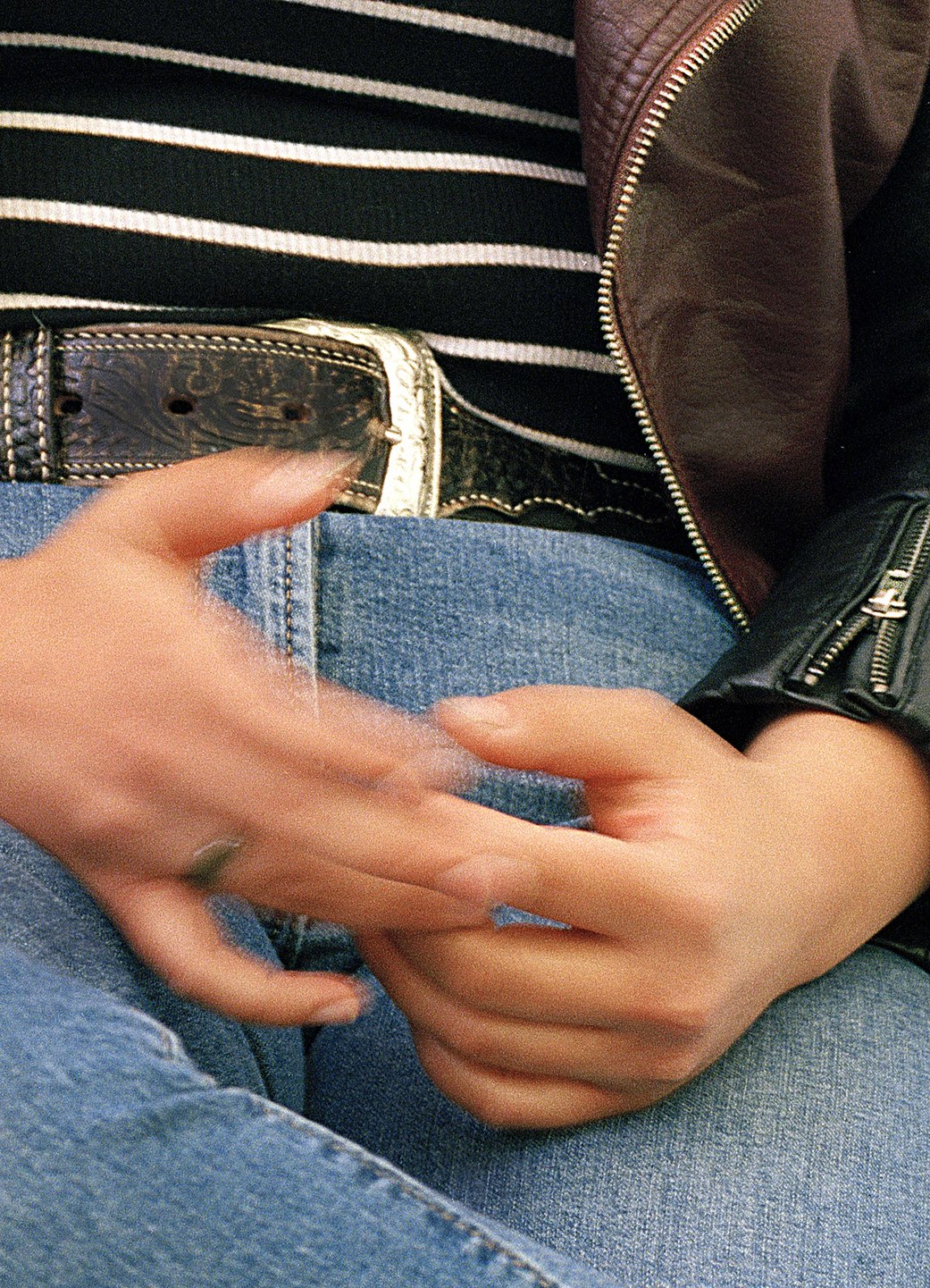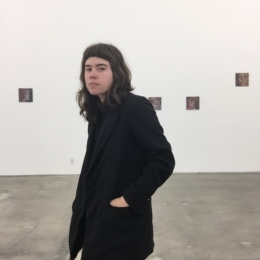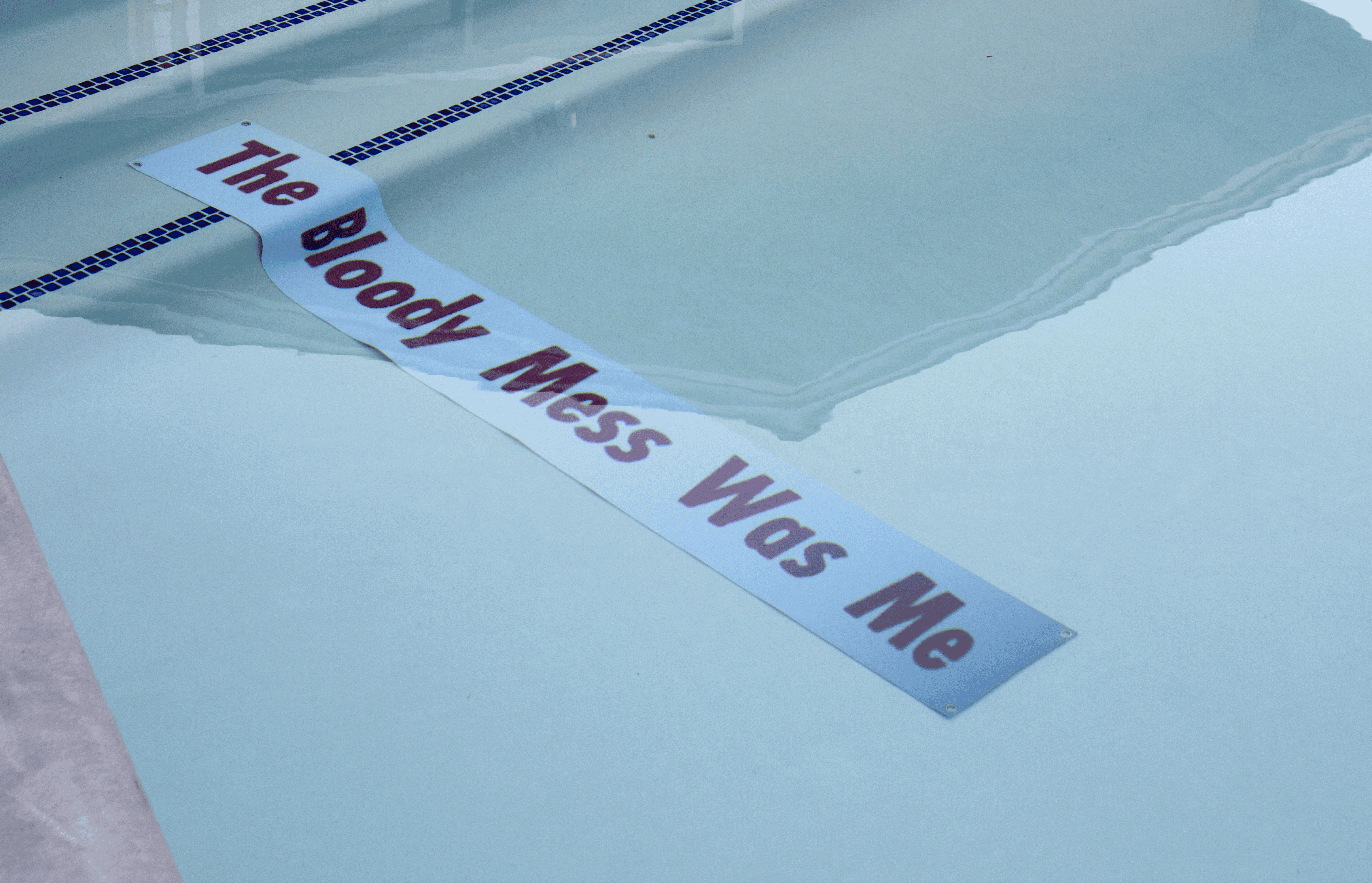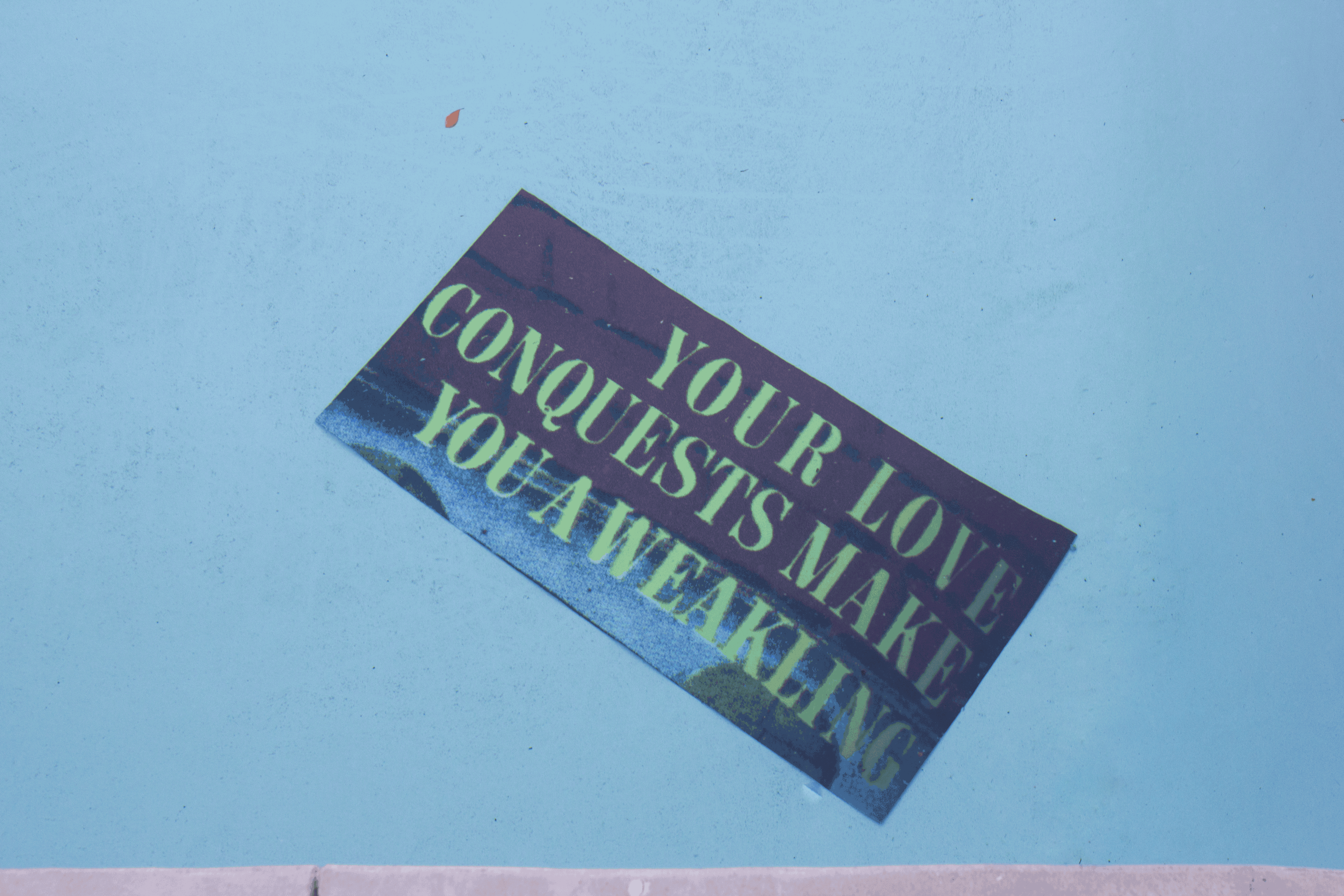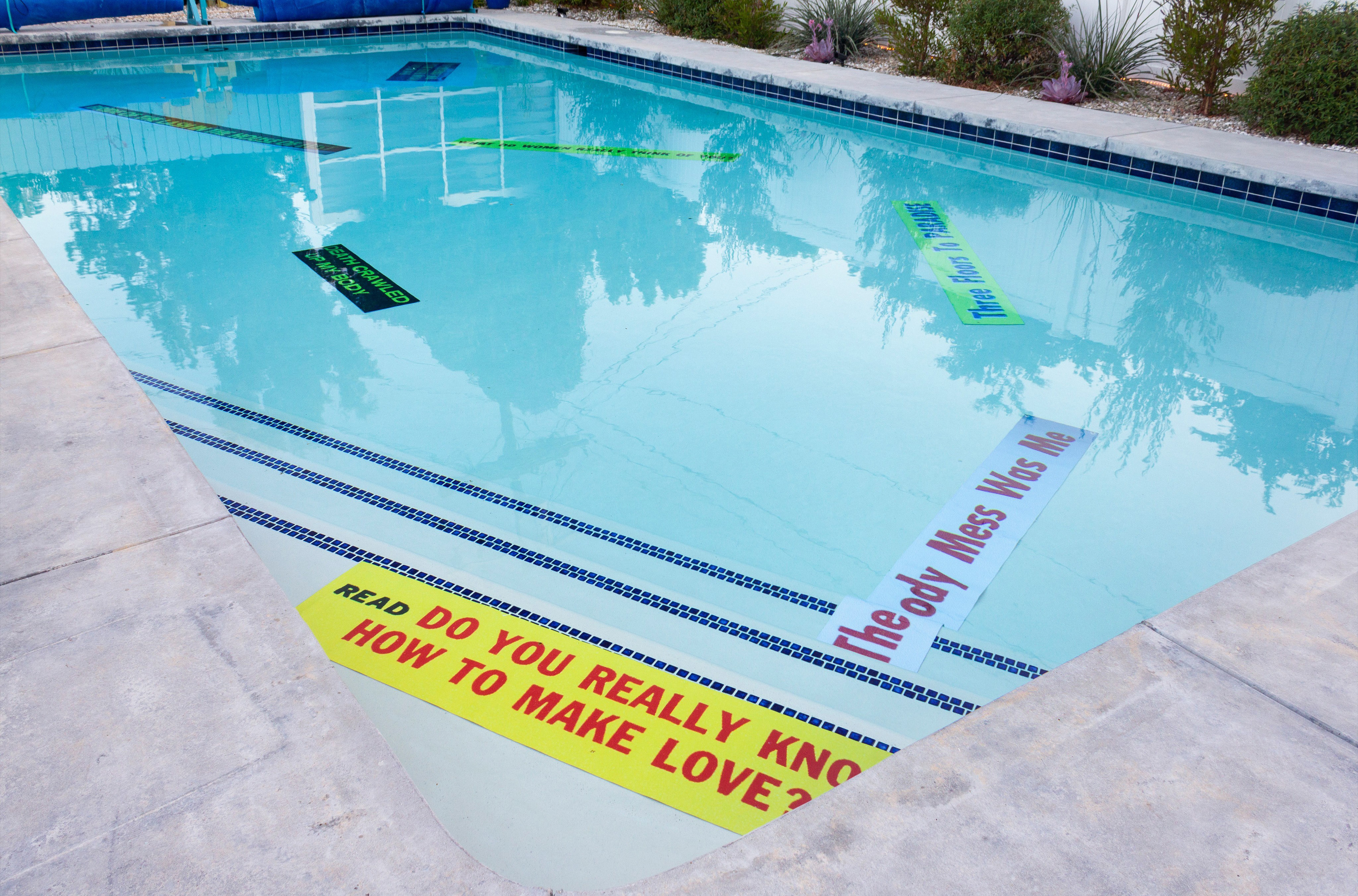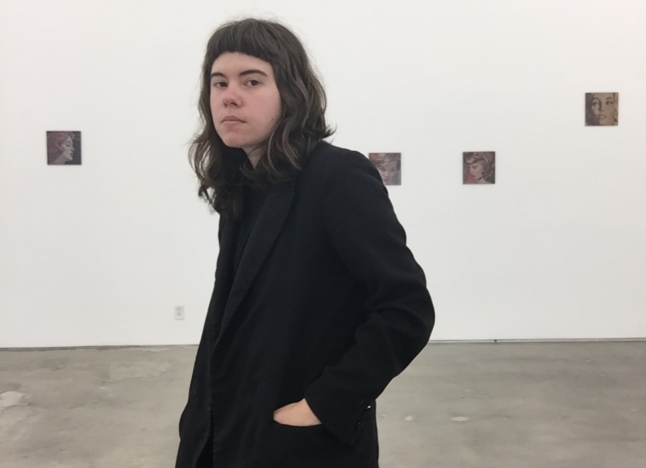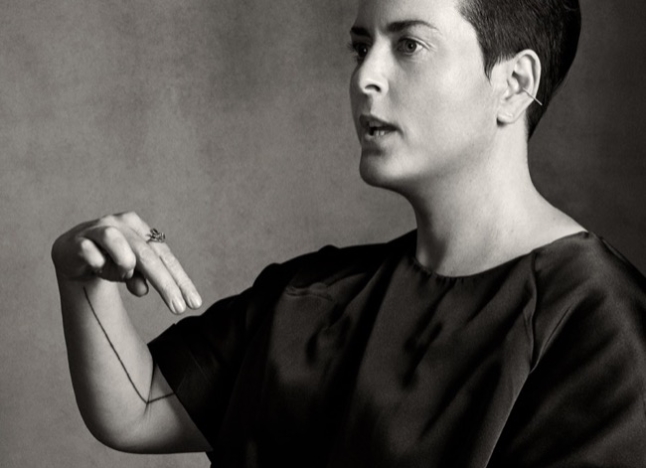Isolde Woudstra
Artist Feature
Every week an artist is featured whose single image was published by Der Greif. The Feature shows the image in the original context of the series.
Jessica Buie - Exposure
Dec 12, 2018
In this series, the crotch is a motif presenting the act of looking as deviant, not only because of the image’s inherent queerness (there is an acute indeterminacy about the identity of the subject due to the physicality and staging of the subject), but because contemporary etiquette vehemently looks down upon this type of looking (directed, engaged looking at the site of another’s body where the enacting of erotics takes place). By making the act of viewing these images a deviant action for any viewer, the particular feeling of criminality imposed on queer acts of desire can be felt universally.
The gesture of both photographing and looking at the crotch refuses the conventional relationship a viewer has to a photographic subject and demands an unnatural relationship to a sexually charged subject-object. It asks the viewer to consider the voyeurism inherent in photography by exposing itself as a genderless surface to be projected upon. These images offer themselves and encourage anonymous cruising regardless of the subject or viewer’s gender or identity. These images present gender as a “complex set of negotiations between bodies, identities, and desire.”
Artist Blog
The blog of Der Greif is written entirely by the artists who have been invited to doing an Artist-Feature. Every week, we have a different author.
Published in:
»Guest-Room Charlotte Cotton«
Sex & Violence
Dec 14, 2018 - Jessica Buie
In 1950, Gold Medal Books became the seminal American publisher of pulp novels. Made from a substandard wood pulp instead of a traditional paper source, pulp novels offered escapist fantasy tales with often lurid and sensational content. In 2013, I began working for the fifth-largest comic book publisher in the United States, headquartered in San Diego, California. Amassing a bloated personal comic book collection quickly led my collecting interests to other “lowbrow” cultural objects, such as the now rare and mythologized pulp novel. Difficult to find today outside of eBay auctions and specialty comic conventions, the pulp novel is known for providing mid-20th century American readers a private place to engage in provocative content that was not frequently portrayed in mainstream media. Their low-cost and unpretentious qualities produced a sense of disposability, as if a reader could simply leave the book on a park bench once they were finished with it.
I began using pulp novels as material in late 2017, fracturing their covers and interiors and mining their salacious texts and illustrations for some resulting photomontages. The tagline texts to these novels were striking: Death Crawled Up My Body, Do You Really Know How To Make Love? Bride of the Lash in the House of Lust! They read less like selling-points to mass distributed fiction and more like Dadaist poetry experiments. I began photographing and scanning the texts. Shown here in their installation view at Public Pool Gallery in Los Angeles, CA, the images were printed on vinyl banners, a new method and iteration of their original marketing purposes. Separated from their original contexts, they speak with a more universal and contemporary tone, musing on topics like sex, violence, and class.
Queering the Photobook
- Jessica Buie
Consider the book: a space where content is simultaneously public and private. You may be at risk of a passerby glancing at a page over your shoulder as you read on the bus, but you are mostly protected from exposing what lies between the covers. Books and literature have historically played a large role in subcultures, acting as coded systems of communication between members. The presence of a single book spine among shelves is just as powerful as a visual code of a certain colored handkerchief stuffed in a back pocket. Cruising book spines.
Contemporary queer artists and photographers are disrupting the traditional logic of bookforms by forgoing stark, narrative-based sequencing. Photo books, at their core, operate through a sequencing of images and sometimes text, but the book form evolves into something new when that logic is subverted. An object in itself that may appear like a photo book, but is something more of a collage in its formal and conceptual structures.
I find myself frequently returning to two such books in particular: Collier Schorr’s I Blame Jordan and K8 Hardy’s Frank Peter John Dick give a master-class on formal and conceptual collaging in contemporary photography.

Shorr’s I Blame Jordan is not merely a presentation of images, but an exploration and experiment of the connection between varied sources: editorial photographs of a male model, text from assorted novels, hand-written notes, and clippings from auto catalogs. With the inclusion of (traditionally) non-photographic objects, the book then becomes less about the images inside of it and more about the way in which these images interact with their curated surroundings. A conversation about masculinity, youth, and desire entangled with memory and subjectivity.

K8 Hardy performs a similar subversion of the book form with her publication Frank Peter John Dick. The book contains a series of collages that were once visual research compositions never intended to be exhibited. These collages, when placed in book form, become a series of propositions for imagined future works. Because Hardy is known primarily for her sculpture and performance work, each image then becomes an imagined experience different for every viewer upon every viewing. Not that the collages are not final products in and of themselves, but their reason for coming into existence is to propose a further iteration and expansion of their ideas.
Glance Gaze Look
Dec 13, 2018 - Jessica Buie

I’ve long been interested in the act of looking:
The gaze of Caravaggio’s The Boy with a Basket of Fruit.
The Chanel model in the advertisement (whom I was never entirely sure if I identified with or desired or both).
A snapshot of a past lover.
Their gazes pierce me and acknowledge my own existence. Our relationship is complicated beyond the photographic binary of active viewer and passive subject. There is a constantly shifting exchange of power as we share our looking at and being-looked-at with one another. We do not meet along the binary of the looker and the looked at, but rather within the spectrum of subject and object. There is a power structure inherent in this relation: who is the primary looker? Whose gaze transforms the other into an object?

The complexity of the act of looking is suggested by the many variations of the word itself: glance, gaze, stare, glimpse. All facilitate a particular meeting of subject and object. Each imply a different operation and a slightly different relationship between the looker and the looked-at, and perhaps even varied implications of desire, identification with the subject, or rejection. How does the body relate and react to these varied forms of looking? The power of the image is such that repeated representation of an idea has the power to transform it from subjective perception to objective reality. As suggested by theorist Kate Linker, “reality can be known only through the forms that articulate it, there can be no reality outside of representation.”
How certain can I be that the bodies in the images I saw on the television screen or in the pages of my father’s newspaper or my mother’s People magazine informed and crafted the self-image I inhabit today? Was there a singular image that cemented my eventual desire for a particularly gendered body?

The exchange that occurs in looking is sexual in nature, reminiscent of an anonymous sex act and parallel to the experience of photographing or being photographed. To look at a photograph is to cruise, to slide your gaze along the subject until you find something recognizable, something (someone) you want to have an exchange with. The exchange is always multiplicitous. Contemporary image-culture, or the images we unconsciously look at on a day-to-day basis (a side glance at the cover of a magazine in the grocery store, a glimpse of a passing billboard while driving down the highway), asks us to consume images of the figure by assuming a gendered and heterosexual gaze. We consume bodies cannibalistically, vampirically, scopophillically, and voyeuristically as image-culture asks the viewer to first and foremost identify with the subject, to project themselves onto the image surface, and then to desire the subject (or most times, the product the subject is selling).
As a queer woman, my gaze as a photographer sexes the framing of the images I consume as well as the images I produce. Queer looking, as we may call it, can keep us conscious of the traditional structures of looking and consuming that a long history of patriarchal and capitalist structures continue to engineer. I cannot help but to give a side glance to the bodies I’m forced to confront as I scroll through and swipe away ads on this or that device. Though I may want to avoid them, as soon as our eyes meet, I am implicated. I once again participate in the machine that uses bodies and gazes to sell things and to define an inescapable mainstream.

To release myself from implication, or to distract myself, I take photographs, not just as a photographer bringing new images into existence, but by taking images of and from original sources and altering them into new evolutions and meanings. Frame. Capture. Own. This ‘looking for images within images’ is a gesture of bringing focus to figures and perceptions that perhaps have been largely ignored or devalued as irrelevant to a contemporary image-world — scans of notes written in the margins of books, long-forgotten personal ads, models in product catalogs. What is the role looking plays in a deeply gendered and capitalistic field of image saturation?
After three years of calling myself a photographer, I am now wholly unconcerned with the gesture and techniques of taking good photographs. In my brief attempts at performing what I thought to be a photographer’s activity (shooting portraits in my studio, hours spent squinting at light tables and medium format scans, amassing stacks of work prints), it quickly became apparent to me that this was not where my central questions would be answered. This was not the thing that teased and tantalized me about photography. And assuredly, many other photographers throughout the history of the medium have sufficiently explored the nature of erotics and queer desire already. I would hesitate now to call myself a photographer, as my current position more accurately reflects a curatorial role. I don’t frequently take images, but I do take images from many sources and push them around until they produce something new.

Eroticism is more than a dialectical interest to me. It is something I seek out in my day to day activity, a feeling of simultaneous fullness and emptiness that I find both alluring and disturbing. The erotic is present in nearly all social interactions I am tasked with participating in everyday, but it is weighed down by the heft of codes that keep it from rising to the surface, or from being immediately readable by its participants. When it does manage to escape the layers of social niceties, it is typically in the form of a gaze, or a brushing touch, or sometimes a verbal caress. The characteristics of eroticism I find so intriguing are its dichotomies. At once, it can be unambiguously present and yet fleeting, transparent and yet opaque. This obscurity eludes specificity and requires no particular gender or sexual identity to operate.
Primarily, it is the tactility and materiality of eroticism that is so tantalizing. What are the mechanics of this inevitable ritual we helplessly perform? Is it possible to give visuality to such a gaseous experience? Maybe the more pertinent question is: why do such a thing? Desire and erotics have long been common subjects of artistic perusal and undeniably take up a sizable chunk of art history, however, my practice differs from existing experiments in decoding the erotic in its discriminatory interest in female masculinity. I obsess over the confusion of gendered codes, the interactions between the photographic functions of the gaze and staging and posturing of queer women, and the materiality of queer erotics.
The difficulty of erotic images is that what one may find paralyzingly desirable, another may find empty and unfulfilling. But rather than inducing desire for my individual subjects (photographed and found), I prefer to induce a raised awareness of the politics of looking, a politics that constantly pushes and pulls at the (queer, female) body with unattainable requirements: sell a product, be an object, be a subject, own your sexuality, give it away. You do not have to experience erotic desire for a body to sympathize with it, nor to recognize the frameworks that dictate its existence. It does not require erotic desire to ask: who is allowed to look? Who is allowed to be looked at?


